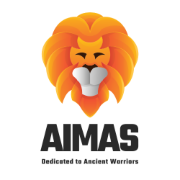I found a really interesting article on a website, with courtesy to this nice website I am sharing a part of the article, if you wanna know more go to that website:
The Bindipala and the nine following are minor weapons of this class. Probably this was a heavy club which had a broad and bent tail end, measuring one cubit in length. It was to be used with the left foot of the warrior placed in front. The various uses of this weapon were cutting, hitting, striking and breaking. It was like a kunta but with a big blade. It was used by the Asuras in their fight with Kartavirya Arjuna.
The Nalika is a hand gun or musket rightly piercing the mark. It was straight in form and hollow inside. It discharged darts if ignited. As has been already said, Sukracarya speaks of two kinds of nalika, one big and the other small. The small one, with a little hole at the end, measured sixty angulas (ie. distance between the thumb and the little finger) dotted with several spots at the muzzle end.
Through the touch hole or at its breach which contained wood, fire was conveyed to the charge. It was generally used by foot-soldiers. But the big gun had no wood at the breach and was so heavy that it had to be conveyed in carts. The balls were made of iron, lead or other material. Kamandaka uses the word nalika in the sense of firing gun as a signal for the unwary king. Again in the Naisadha, a work of the medieval period, Damayanti is compared to the two bows of the god of love and goddess of love, and her two nostrils to the two guns capable of throwing balls.
Thus there is clear evidence of the existence and use of firing guns in India in very early times. The Cakra, the next weapon in the category, is a circular disc with a small opening in the middle. It was of three kinds of eight, six and four spokes. It was used in five or six ways. It resembled the quoid of the Sikhs today. Lord Vishnu is popularly addressed as Sankha-cakra-gada-pani, that is having Sankha or conch, Cakra or disc, and Gada or mace in three of his four hands.The various uses of a disc were felling, whirling, rending, breaking, severing, and cutting. It is one of the instruments peculiar to Lord Vishnu. Kautalya speaks of it as a movable machine. The Cakra belongs to the category of a missile. According to the Vamanapurana, the Cakra has lustrous and sharp edges. The Tomara is another weapon of war frequently mentioned in all kinds of warfare. It was of two kinds, an iron club (sarvayasam) and a javelin. . According to the Agni Purana it was to be with the help of an arrow of straight feathers, and was powerful in dealing blows to the eyes and hands of an enemy.
The Dantakanta, is another weapon of war, perhaps the shape of a tooth, made of metal, of strong handle and a straight blade. It had two movements.
The Pasa, which is a noose killing the enemy at one stroke, of two or tree ropes used as a weapon attributed to the god Varuna. It was triangular in shape and embellished with balls of lead. It was associated with three kinds of movements. In the Agni Purana are described eleven ways of turning it to one's own advantage by dexterity of hand. The Masundi, was probably an eight sided cudgel. It was furnished with a broad and strong handle. It apparently comes from the root-meaning to cleave or break into pieces, and perhaps akin to the Musala. All these and more found used in one battle or another both in the Mahabharata and the Ramayana.





No comments:
Post a Comment